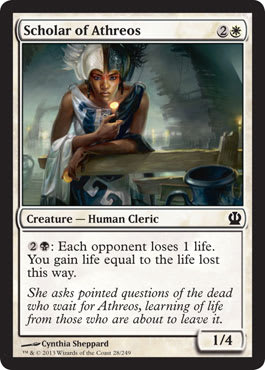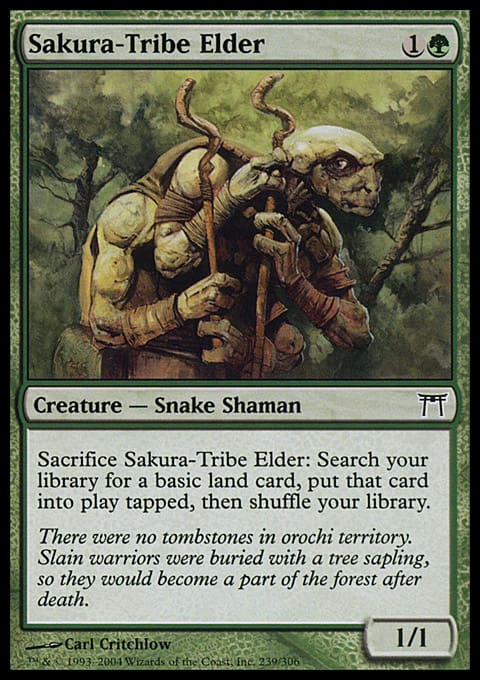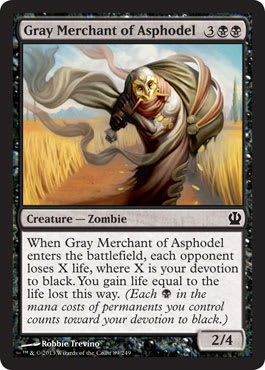If you’re reading this, there is a pretty strong chance that you are a fan of drafting Magiccal cards. If not, you’re probably my father.
Hi, Dad.
One of the reasons Draft is appealing is that it puts everyone involved on an even level of card availability. Cube takes it one step further since packs do not need to be purchased (just assembled). Given enough friends and sustenance, Cube fiends could go on for days on end.
But what happens when friends are in short supply? Everyone is out at a Pro Tour Qualifier or a Grand Prix or just doing something (gasp) not Magic related. Instead, it’s just you, your stalwart Draft companion, and the Cube.
Don’t worry; there are formats for that.
Two-Person Draft Formats
Two-person Draft formats are excellent tools to get extra mileage out of a Cube. More than that, they allow new cards to be tested in a controlled environment in which they can be dissected by a small group rather than upset the applecart of a whole Draft. For many years, my main Draft buddy in this respect was Seth Burn (he of the Jund deck from a few weeks back). Before I moved for work, Seth and I would routinely battle for hours on end in various different two-person Draft formats, moving through each of the options listed below. I won’t wax poetic about why we moved from format to format—the main driver was speed. We went with whatever was fastest to make sure we could complete more Drafts.
The first format we tried was Winston Draft. In this version, three cards are placed in three separate, facedown piles. Players takes turns looking at the piles in order. Once a pile is passed over, a new card is added on top. If a drafter takes none of the piles, he or she is able to take a random card off the top. Aaron Forsythe provides a more in-depth write up of Winston here.
Seth and I both liked Winston, but the hidden-information aspect of the Draft made it heavy on mental bookkeeping. In turn, our sessions ran long. When I read about Winchester Draft in this 2011 Tom LaPille piece, I brought the idea to Seth. The Draft moved almost twice as fast, and we were hooked. In Winchester, the four piles are placed face-up. After a player drafts, a card is added to each pile, and then the next player can take any of the piles. Back and forth it goes until all the cards are drafted. Winchester exposes all the hidden information, reducing the mental note-taking that can occupy time and brain space.
Seth and I discovered Grid Drafting after I had moved to a different part of the state. The fact that we were no longer living fifteen minutes away from each other meant that we drafted this style far less than the others. It has continued the trend of being a quicker Draft and is currently my favorite two-player format. In Grid, the cards are placed in a three-by-three square, and players alternate taking a horizontal column or vertical row. Once each player has selected from the sheet, the remaining cards are discarded.
Andrew Rodgers has a solid write-up and comparison of Winchester and Grid available for consumption on this very site. I agree with just about everything he says, so rather than plagiarize, I’m just going to direct you to the proverbial horse’s mouth.
Seth and I have our own twist on these Drafts. Instead of going through the process and building one deck each, our stacks grow to mammoth sizes, and we build three decks apiece. We then battle them in a random order in best-three-out-of-five sets. For Winston and Winchester, the stack includes 184 cards while Grid has a stack of 270. These Drafts are great for seeing which cards perform across multiple archetypes. What these formats are less adept at divining are the power levels of archetype-specific cards or multicolored cards. While first-picking a card like Blind Hunter can set the tone of the upcoming picks, in these formats, gold cards are liabilities, as they often come with cards that are neither of their base colors. In a normal Draft, you can work to make sure you have a deck to play your powerful cards. Heads-up, it makes sense to pick the objectively strong cards rather than the ones that work in specific decks. As such, it does not make sense to evaluate the strength of a gold card in these formats.
Let the Games Begin
So, back to the Draft at hand. Seth and I set up shop in my apartment. We opened the blinds to get a great view of the Manhattan skyline over Seth’s shoulder and the Brooklyn–Queens Expressway over mine. The Draft was uneventful, with each of us taking a pack of three cards all but once. My decks largely built themselves. Gray Merchant of Asphodel, Scholar of Athreos, and Blind Hunter made for the base of a solid Orzhov, grind-style deck. My green fixing was abundant with Sylvan Ranger, Yavimaya Granger, Sakura-Tribe Elder, and Civic Wayfinder. I eventually paired green with some red removal and sideboard blue tempo options. My final deck was an Izzet, value-style deck similar to the one I discussed last time.
Seth had a much harder time crafting his decks. While my build took moments, Seth agonized for quite a while, trying multiple combinations. Eventually, he settled on a Grixis deck, a Gruul deck with sideboard Naya cards, and his own take on Orzhov midrange, featuring the powerhouse duo of Totem-Guide Hartebeest and Pillory of the Sleepless.
Round 1
After rolling to select the random order, we sat down to battle. The first match placed my Orzhov build against Seth’s Grixis. These two decks were evenly matched on the attrition axis. Seth had more card-draw in his deck, which allowed it to pull ahead in games that went exceptionally long. My weapon, on the other hand, relied on Gravedigger-style cards for card advantage but had some serious tempo plays with Blind Hunter and Gray Merchant of Asphodel. I dispatched Seth fairly easily in Game 1. In Game 2, I had an early advantage, but Seth battled back with Crippling Fatigue and Strangling Soot. I was slowly losing life, but I refused to cast the Kingpin's Pet in my hand due to the live Strangling Soot. Eventually, I was able to play out the Pet and Highborn Ghoul, forcing Seth to make a choice. While he ended up killing the Kingpin's Pet, my next draw was Gray Merchant of Asphodel, and thanks in part to Highborn Ghoul, I had enough devotion to seal the game.
After pulling ahead two games to none, the wheels started to come off. We had a close Game 3 in which Seth was the victor. In Game 4, I took a mulligan and was never able to recover. In the final game, I kept a risky hand with a lot of potential for a long slugfest. Seth had other ideas and managed to stomp all over me with what he described as his perfect beatdown draw.
Lesson learned: Sometimes, even the control can beat down.
In the final game, I kept a hand that would have been great if the game had gone long. I had failed to account for Seth’s potential to go on the offensive with an abundance of 3-drops. While I would not have sideboarded differently for that game, I probably won’t keep a similar hand against a similar deck in the future.
Orzhov ? Cube | Alex Ullman
- Creatures (19)
- 1 Accursed Spirit
- 1 Attended Knight
- 1 Blind Creeper
- 1 Blind Hunter
- 1 Cadaver Imp
- 1 Fallen Askari
- 1 Gray Merchant of Asphodel
- 1 Highborn Ghoul
- 1 Kingpin's Pet
- 1 Okiba-Gang Shinobi
- 1 Phyrexian Rager
- 1 Rakdos Shred-Freak
- 1 Scholar of Athreos
- 1 Sensor Splicer
- 1 Skinthinner
- 1 Undead Executioner
- 1 Viscera Dragger
- 1 Warren Pilferers
- 1 Pith Driller
- Spells (4)
- 1 Rebuke
- 1 Unmake
- 1 Victim of Night
- 1 Pacifism
- Lands (17)
- 10 Swamp
- 6 Plains
- 1 Orzhov Basilica
- Relevant Sideboard (2)
- 1 Gods Willing
- 1 Temporal Isolation
Grixis ? Cube | Seth
- Creatures (13)
- 1 Aether Adept
- 1 Ashmouth Hound
- 1 Chittering Rats
- 1 Deranged Assistant
- 1 Frostburn Weird
- 1 Hanweir Lancer
- 1 Mulldrifter
- 1 Nyxborn Triton
- 1 Rendclaw Trow
- 1 Stormbound Geist
- 1 Suq'Ata Lancer
- 1 Typhoid Rats
- 1 Spire Golem
- Spells (10)
- 1 Grasp of Darkness
- 1 Snakeform
- 1 Strangling Soot
- 1 Crippling Fatigue
- 1 Deep Analysis
- 1 Foresee
- 1 Morbid Plunder
- 1 Silent Departure
- 1 Crusher Zendikon
- 1 Wanderer's Twig
- Lands (17)
- 3 Mountain
- 6 Island
- 6 Swamp
- 1 Rakdos Carnarium
- 1 Terramorphic Expanse
Round 2
Our second set was some Gruul-on-Gruul violence. Seth’s build had more large creatures, including Nessian Asp, Durkwood Baloth, and Rumbling Baloth. My stack had more mana-fixing and access to Repeal and Remove Soul in the sideboard. I also had Sedge Scorpion and Deadly Recluse to try to stem the bleeding. In the first two games, my meager army of mana-fixers was no match for Seth’s forces. I sided into my blue cards and was able to win without showing him my tricks in Game 3. In Game 4, we entered into a standoff in which we each ripped successive lands while my Sentinel Spider enhanced by Trusted Forcemage held off his big beaters. I was building toward a big Repeal turn, and I finally alpha-struck, blowing Seth out with Symbiosis and Repeal. Game 5 was a back-and-forth affair, but well-timed burn from Seth ended the day.
Lesson learned: Sideboarding is key.
While the virtues of sideboarding are often discussed and praised, it deserves to be said again. Not only did I side into cards that could blow the game open, but I had to go into another color to access the cards. On top of that, I took out my targets for Seth’s Wickerbough Elder, stranding it as a Hill Giant.
Gruul ? Cube | Alex Ullman
- Creatures (15)
- 1 Civic Wayfinder
- 1 Deadly Recluse
- 1 Elvish Mystic
- 1 Kozilek's Predator
- 1 Llanowar Empath
- 1 Pheres-Band Tromper
- 1 Sakura-Tribe Elder
- 1 Sedge Scorpion
- 1 Sentinel Spider
- 1 Slaughterhorn
- 1 Sylvan Ranger
- 1 Trusted Forcemage
- 1 Yavimaya Granger
- 1 Zhur-Taa Druid
- 1 Perilous Myr
- Spells (9)
- 1 Barbed Lightning
- 1 Chandra's Outrage
- 1 Leeching Bite
- 1 Symbiosis
- 1 Arc Lightning
- 1 Flame Slash
- 1 Pyrotechnics
- 1 Time to Feed
- 1 Vulshok Morningstar
- Lands (16)
- 7 Mountain
- 8 Forest
- 1 Simic Growth Chamber
- Relevant Sideboard (3)
- 1 Island
- 1 Essence Scatter
- 1 Repeal
Gruul ? Cube | Seth
- Creatures (18)
- 1 Aerie Ouphes
- 1 Ambassador Oak
- 1 Crocanura
- 1 Durkwood Baloth
- 1 Elvish Visionary
- 1 Leafcrown Dryad
- 1 Llanowar Elves
- 1 Mold Shambler
- 1 Nantuko Shaman
- 1 Nantuko Vigilante
- 1 Nessian Asp
- 1 Nest Invader
- 1 Nylea's Disciple
- 1 Retromancer
- 1 Rumbling Baloth
- 1 Thrashing Mossdog
- 1 Werebear
- 1 Wickerbough Elder
- Spells (5)
- 1 Branching Bolt
- 1 Lightning Bolt
- 1 Searing Blaze
- 1 Wild Hunger
- 1 Pillar of Flame
- Lands (17)
- 8 Forest
- 8 Mountain
- 1 Selesnya Sanctuary
- Relevant Sideboard (4)
- 2 Plains
- 1 Common Bond
- 1 Centaur Healer
Round 3
Our final battle was between Seth’s Orzhov midrange and my Izzet deck. In the first two games, Seth handled me easily, and I was never able to establish a board presence. Game 3 was a much closer battle, with my flyers coming in for the kill. I sided into an additional burn spell and revised my game plan. My new goal was to bring Seth low enough that my arsenal of burn could finish him off. This worked perfectly in Games 4 and 5, with my red spells dealing the final points in both of the final games.
Lesson learned: Nyxborn Shieldmate impressed.
I was nervous about Nyxborn Shieldmate. While bestow impressed me as an ability, this was just about the barest possible implementation of the ability. In one game, the Shieldmate came down on turn two to play defense on a freshly-cast Mogg War Marshal. It isn’t often that a card in my Cube makes me sit back in my chair and take notice, but it happened when Seth hard-cast this enchantment as a creature.
Izzet ? Cube | Alex Ullman
- Creatures (15)
- 1 Cloud Elemental
- 1 Errant Ephemeron
- 1 Fathom Seer
- 1 Fervent Cathar
- 1 Gore-House Chainwalker
- 1 Kathari Screecher
- 1 Kruin Striker
- 1 Merfolk Looter
- 1 Mogg War Marshal
- 1 Scrapskin Drake
- 1 Seacoast Drake
- 1 Shimmering Glasskite
- 1 Skirk Marauder
- 1 Vithian Stinger
- 1 Waterfront Bouncer
- Spells (9)
- 1 Brimstone Volley
- 1 Burst Lightning
- 1 Incinerate
- 1 Into the Roil
- 1 Lightning Strike
- 1 Psychic Barrier
- 1 Firebolt
- 1 Undo
- 1 Claustrophobia
- Lands (16)
- 7 Mountain
- 8 Island
- 1 Izzet Boilerworks
- Relevant Sideboard (1)
- 1 Yamabushi's Flame
Orzhov ? Cube | Seth
- Creatures (15)
- 1 Benevolent Bodyguard
- 1 Bloodhunter Bat
- 1 Burrenton Bombardier
- 1 Daring Skyjek
- 1 Dawnglare Invoker
- 1 Hopeful Eidolon
- 1 Kabuto Moth
- 1 Kor Skyfisher
- 1 Nyxborn Shieldmate
- 1 Observant Alseid
- 1 Safehold Elite
- 1 Skyhunter Patrol
- 1 Totem-Guide Hartebeest
- 1 Twisted Abomination
- 1 Razor Golem
- Spells (8)
- 1 Death Wind
- 1 Judge Unworthy
- 1 Last Gasp
- 1 Second Thoughts
- 1 Snuff Out
- 1 Arrest
- 1 Pillory of the Sleepless
- 1 Strands of Undeath
Final tally: Alex 7, Seth 8
Two-player Draft formats are a fine way to play Magic if there aren’t six or eight players to be found. I prefer Grid because of how fast the Draft moves, which leaves more time for the games. How do you like to draft when packs are plentiful and players are scarce? Let me know.
Keep slingin’ commons—
-Alex
SpikeBoyM on Magic Online
Check out Common Cause on iTunes!
Discuss Pauper on Twitter using #mtgpauper



























